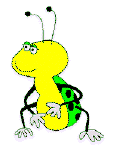CDP Unit
on the Galapagos Islands
An
Ecological Issue

Unit Topic: The
Galapagos Islands
Grade Level: Middle
School
Concepts: Responsibility
for pollution, care of the environment, critical thinking
Content Area: Social
Studies, Language Arts, Science
Materials: Reference
materials, paper, writing utensil
Time: 1 hour
Objectives
- Students will become
more aware of the situations that are occurring to the ocean and its beaches
- Students will become
more aware of the roles that they could play in solving the problems that
are being created for the oceans and waterways.
- Students will be involved
in actual saving of the ocean.
Procedure:
Many of our beaches
and waterways are becoming polluted due to people's carelessness, indifference,
and ignorance. Some things, such as oil spills, are not the direct result
of your own actions. However, there are positive steps you can take to prevent
any more litter on the shores and entanglement in the ocean. Sample projects
are listed below. Have the students partner up, and then choose an activity,
or create an activity of their own that will help in saving the oceans.
- When you are at the
beach, take along a biodegradable container. As you find litter, pick it up
and put it into the container; dispose of it properly. (what kinds of things
did you find on the beach? Make a chart to show how many of each you found.)
Note: You may want to wear rubber gloves to protect yourself from any hazardous
materials.
- Sea turtles are an
endangered species. If you encounter one, be careful not to disturb it. Avoid
its nesting grounds; sea turtles bury their eggs and you might accidentally
crush them. Also, do not purchase any products made out of these animals.
(On which beaches would you most likely see a sea turtle? What products are
manufactured from them?)
- When you go boating,
dispose of refuse properly. Dumping things off the boat and into the water
can cause animals to become entangled in these objects. (List some things
that are likely to cause entanglements. Explain what can happen if an animal
becomes entangled in plastic 6-pack rings, etc.)
- If you buy helium filled
balloons, dispose of them properly. Balloons released into the air could possibly
land in open waters where animals might swallow them. (Explain what could
happen to a sea creature that swallowed a balloon. Find out if it is harmful
to release helium into the atmosphere.)
- Write to either of
the following agencies to find out more information about what you can do
to help stop pollution on our beaches and waterways.
- Center for Marine
Conservation, 1725 DeSales Street NW, Washington, DC 20036
- The Oceanic Society,
218 D Street SE, Washington, DC 20003
- Thousands of dolphins
are captured and killed by tuna fisherman each year. Find out what the tuna
industry is currently doing about this problem. List some of the things that
you can do to help save the dolphins.
Assessment:
Student cooperation
is important throughout this whole project. The Observation
Rubric is justification for all of their activities throughout this
lesson. Final projects that will be presented to the class can be assessed
by the Project Rubric. Students must accumulate
12 points from the Project rubric, and a 5 on the Observation rubric to
be successful.
Extensions:
Students can develop
their own ideas of how to save the waterways, and do alternative activities
that can be reported to the class just like the rest of them.
References: Sterling,
Mary Ellen. (1990). Thematic Unit: Oceans. Huntington Beach, CA : Teacher Created
Materials, Inc. ISBN # 1-5734-284-9

